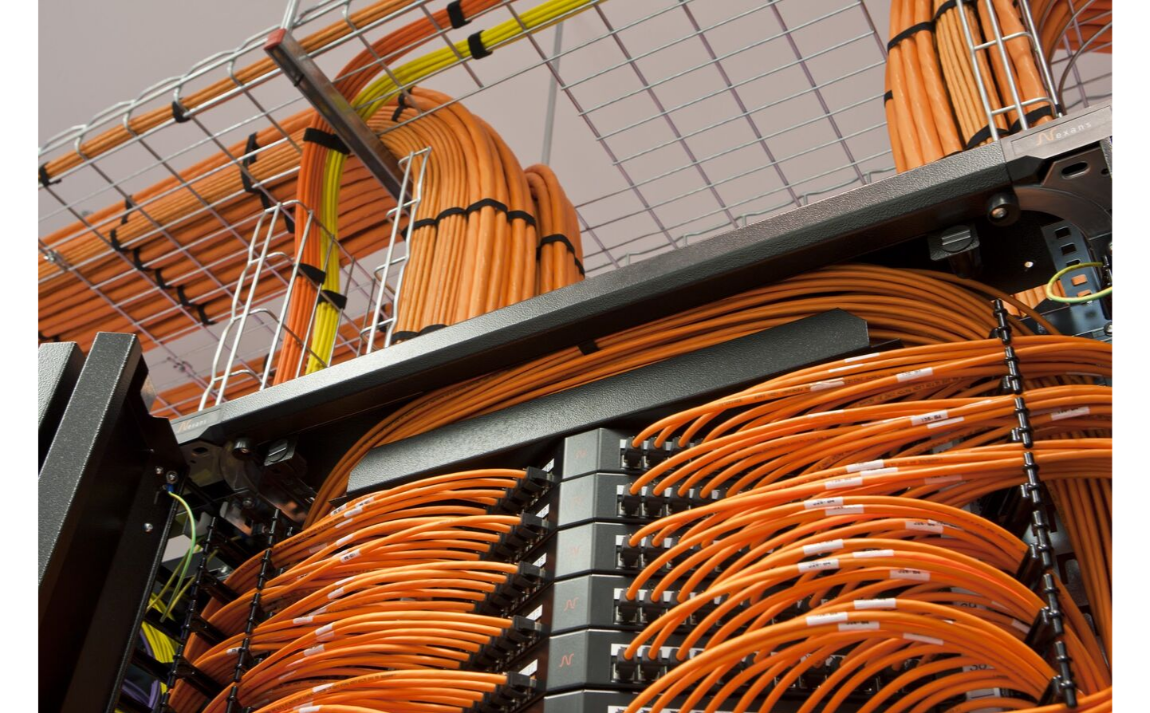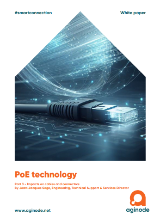- About Aginode
- Data Networks
- Telecom Infrastructure
- Products
-
Resources
- Resources
- Documentation
- Blog
-
Case Studies
- Overview
- Innoasis development in Norway
- Eemsdelta Campus
- Hotelschool The Hague
- Emergency covid hospital, Hong Kong
- Société du Grand Paris
- Centrin Datacentres
- Airbus
- Athens Historic City Hall
- Pinewood Studios
- Goethe University Frankfurt
- Denmark New University Hospital
- University of Toulouse
- CHM Maubeuge: a model for future-ready hospitals
- Webinars
- Software Tools
- Warranty
- Newsroom
- Search
- Contact us
- Compare
- Sign in
Office & Enterprise
How to limit the impact of high power PoE on cabling?


In previous posts we established the importance of Power over Ethernet (PoE) for Intelligent Buildings and expanded on the 4 PoE Types ratified by the international standards. This post will focus on the impact High Power PoE has on data cables and connectors and how to reduce its negative effects.
Impact on connectivity
Connectivity, like an RJ45 connector or a patch cord plug, having power flow through will dissipate heat - but won’t overheat. What’s important to know is the damage that can happen to a connector’s contacts over time during unplugging when under power. Disconnecting the connector from its socket will generate arcing, which in turn corrodes the contact’s protective gold plating. This can result in increased attenuation and eventually for the connection to fail completely.
To avoid this loss of connection or increased attenuation it is recommended to choose connectors that have the contact area separated from the disconnection area and have thicker gold plating.
Impact on cables
Like with bandwidth, the amount of power sent through a twisted pair cable will reduce during its journey towards the end device. This isn’t the cables’ fault though. The ‘loss of power’ isn’t lost – it is simply converted into heat due to the Joule effect. And the higher the power sent through the cable, the greater the heat that will be generated within. Add to this that cables are usually installed in bundles, and you end up with those in its centre heating up more than those nearer the edges.
The level of temperature rise in a cable is determined by several factors:
- the Type of Poe: The higher the Type, the higher the temperature rise.
- the cable type used. Shielded cables dissipate heat better than unshielded ones.
- the DC resistance of the cabling channel. A Cat 6A cable has thicker conductors that offer lower conductor resistance than its Cat 5e counterpart.
- the bundle size. The more cables in a bundle, the higher the temperature rise in its midst.
- a cable’s location. Cables in closed tray baskets will heat up more than those in open trays.
- stranded vs solid wires. Stranded cable consist of numerous smaller wires which have a higher DC resistance compared to solid wire cable.
Recommendations for design and implementation
To limit the impact higher power PoE can have on a copper cabling system we drew up a set of recommendations:
- Limit the size of bundles to 24 cables. For higher categories such as shielded Cat.6A & Cat.7A larger bundles of 48 cables can be accommodated.
- Inside the cabinet match the bundle of cables to the number of panel ports - usually 24.
- For pathway systems go for open basket trays over closed trays.
- Opt for shielded cable over unshielded as the metallic foil will dissipate the heat better.
- Higher category cable will heat up less compared to lower category cable.
- Limit stranded wire patch cord bundles to 6.
- Keep cables away from heat generating equipment wherever possible.
Read the WHITE PAPER below for more details.
Documentation
Categories
Our websites
Select your country to find our products and solutions
-
Africa
- Africa
- Ghana
- Ivory Coast
- Morocco
- North West Africa
- Americas
- Asia
- Europe
- Oceania

